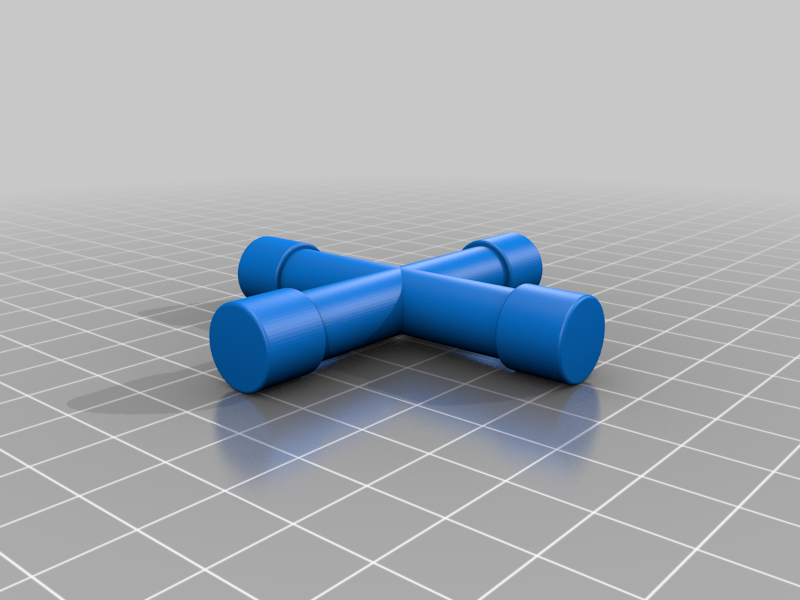
FirstPrincipals Z motion system
thingiverse
1PZ bed or XY gantry lifting/lowering system for 3D printers. Update 26/07/22 Added two designs for the 2 degrees of freedom pivot. Added two designs of cradle for the pivot that could be incorporated into a bed arm Added one design for a bed arm with built in cradle for pivot. <b>Field of Invention</b> The present invention relates to apparatus and methods (system) for raising or lowering a bed or gantry in a 3D printer. The license holder for this system is Liam Venter. <b>Object of the invention</b> The 1PZ or First-Principals Z motion system is a unique new Z motion system that provides for auto bed levelling with no leadscrew banding or artifacts in the print. <b>Background of operation of lifting/lowering a bed/gantry in a 3D printer</b> A completely non constrained bed would have 6 degrees of freedom as follows: 1. Rotation about X axis 2. Rotation around Y Access 3. Rotation around the Z axis These first three degrees of freedom are often referred to as Roll, Yaw and Pitch. 4. Movement in the X direction 5. Movement in the Y direction 6. Movement in the Z direction A 3D printer with a moveable bed needs at the minimum 1 degree of freedom. A 3D printer with a self levelling bed needs at a minimum 3 degrees of freedom. 1. Movement in the Z direction 2. Rotation about the X axis 3. Rotation about the Y Axis <b>Background art:</b> Current methods, for doing this are fundamentally floored due to the relationship between the lifting elements. Movement of the bed or gantry in the Z direction. 1. This is typically achieved in current commercial printers using a cantilevered bed. In this arrangement the bed is mounted to a lifting component that is driven by a leadscrew, ball screw or belt. A reference guide is provided either with two or more smooth rods or linear rails. An example of this would be the bed lifting system employed in Markforged printers. This system does not allow automatic bed levelling. 2. The Open Source Community has also developed systems using 2 or more bed/gantry raising/lowering mechanisms that are referenced to each other by a fixed cradle under the bed. An example of this would be the bed lifting system employed in the Voron Trident printer. These do not allow automatic bed levelling unless some flexible component is introduced between the bed lifting mechanism and the bed. 3. The Open Source Community has also developed systems using 3 or more nearly independent lifting mechanisms. An example of this would be the bed lifting system employed in a Jubilee printer. These systems do allow automatic bed levelling but the lifting mechanisms are not directly referenced to each other. And there are more degrees of freedom than ideal. <b>Field of the invention:</b> The present invention relates to apparatus and methods as follows: <b>The claims for the 1PZ system are as follows.</b> The 1PZ or First-Principals Z motion system is a unique new Z motion system that provides for auto bed levelling with no leadscrew banding or artifacts in the print. This is achieved by limited the freedom of degrees of movement to only the minimum three degrees of movement required as follows: 1. Movement in the Z direction 2. Rotation about the X axis 3. Rotation about the Y Axis <b> Description of Invention</b> 1. The IPZ system utilizes three or more independent lifting mechanisms to allow automatic bed levelling in the X and Y axis of rotation and vertical movement in the Z direction. 2. The 1PZ system employs a mechanism that limits movement of the moving bed or gantry to two degrees of freedom in the X and Y rotation. There are a variety of mechanisms to achieve this. The specific mechanism for doing this is not prescribed in this license. Only the location of this device and specified degrees of freedom are. 3. This mechanism is situated between one of the lifting mechanisms (leadscrew, ball crew, linear motion system or belt) and the surface of the bed or gantry of the 3D printer. It can be of various designs to suit the required packaging. For the purpose of providing a functional understanding of this mechanism the components of one such possible design is illustrated to show it's function. More options for this mechanism will be shown shortly. 4. Integral to the 1PZ system is a precise reference system for guiding the Z movement. This reference mechanism works in conjunction with the 2 degree mechanism to provide the third degree of freedom required to raise or lower the bed or gantry system. The Z movement reference system will comprise of three or more vertical linear rails, smooth rods or linear motion systems. The specific mechanisms for doing this are not prescribed in this license. Only the specified degrees of freedom are. 5. The 1PZ system employs one or more mechanisms in the Z raising lowering system that allow freedom of movement or tolerance of movement in the X and Y direction of the bed or gantry between any Z movement components for the bed or gantry that are NOT part of the Z reference mechanism in item four above. This mechanism or built in tolerance is required to prevent mechanical quarrel between one or more of the bed/gantry raising or lowering systems. 7. This license and invention covers the kinematic interactions of the components in paragraphs 1. 2, 4, and 5. above and the forces they deal with. 8. The system may be retrofittable to many current 3D printer designs.
With this file you will be able to print FirstPrincipals Z motion system with your 3D printer. Click on the button and save the file on your computer to work, edit or customize your design. You can also find more 3D designs for printers on FirstPrincipals Z motion system.
